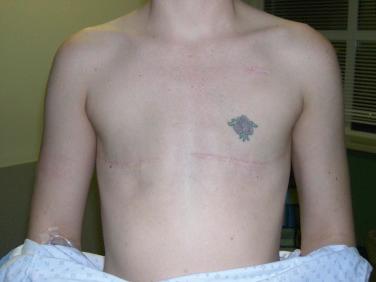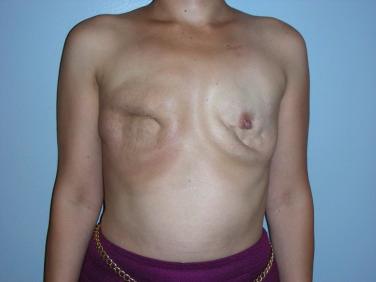Physical Address
304 North Cardinal St.
Dorchester Center, MA 02124
Disclosure : The authors have no financial interest to declare in relation to the drugs, devices, and products mentioned in this article.
Implant-based breast reconstruction can also occur in a two-stage delayed approach after the primary mastectomy has been completed. Traditionally, delayed breast reconstruction often involves autologous tissue options due to the association with adjuvant radiation and the subsequent need for distant healthy tissue to recreate the breast. However, the use of tissue expanders in a two-stage approach can also be performed safely with appropriate patient selection especially if the patient does not need postoperative radiation.
Some women may choose to forego any decision for breast reconstruction prior to their oncologic surgery or may change their mind later. In these cases, the patient can be served with a two-stage total muscle coverage implant-based reconstruction.
In this chapter, the authors will describe tissue expander–based delayed breast reconstruction with total muscular coverage during the first-stage procedure. Emphasis will be placed on surgical technique, as well as highlighting key concepts in delayed implant-based breast reconstruction.
The delayed approach to two-stage implant-based breast reconstruction is indicated for patients who are, in general, good candidates for implant-based procedures. These include relatively thin patients and patients requiring bilateral reconstruction ( Fig. 13.1 ). The success and outcome of delayed implant-based reconstruction depends less on a reliable native soft tissue envelope since, due to the delayed nature of the reconstruction, the remaining mastectomy skin flaps have benefited from a delay phenomenon, making them more robust and reliable. Importantly, total muscular coverage relies on intact pectoralis major and serratus muscles as part of the reconstruction.

Furthermore, delayed reconstruction can serve a valuable role if immediate reconstruction is threatened by compromised mastectomy flaps, which risk prosthesis exposure or extrusion. If an autologous option is not possible, then a delayed two-stage implant-based reconstruction can be performed if the patient desires implant-based reconstruction.
On the contrary, relative contraindications to implant-based reconstruction include severe radiation changes or poor native skin for coverage of the implant. Other relative contraindications include obesity, smoking, and poorly controlled medical co-morbidities such as diabetes. Additionally, the senior author does not proceed with delayed implant-based reconstruction if the pectoralis major muscle has been resected or significantly traumatized. In cases of radiation or damaged pectoralis muscle, the senior author prefers a pedicled latissimus dorsi myocutaneous flap with a tissue expander for the two-stage delayed breast reconstruction.
A thorough discussion should be had with the patient prior to undergoing delayed implant-based breast reconstruction. A careful physical exam must also be performed, and key factors highlighted, such as missing pectoralis major muscle or serratus anterior muscle, quality of overlying skin, and potential regional coverage options such as the latissimus dorsi muscle ( Fig. 13.2 ). Expectations must also be addressed, including initial or final breast shape and size. Patients should be counseled that delayed reconstruction in the setting of limited skin pliability can lead to a slower or difficult expansion process as well as result in a less natural shape of reconstructed breast, especially lack of a well-defined inframammary fold.

Regarding the expansion process, attention is paid to the lower pole. Specifically, it will be important to choose a tissue expander that can preferentially expand the lower pole more. Surgical planning will also assist in redefining a new inframammary fold that is at the appropriate location. When using traditional tissue expanders, the placement of the tissue expander must be lower than the actual level of the inframammary fold in reference to the contralateral side so that the expansion for the lower pole can be optimized.
It is also important to emphasize need for total muscular coverage of the implant. In this manner, the pectoralis major muscle, serratus anterior muscle, as well as fascia of the rectus abdominis should be present. This will ensure that in cases of skin breakdown no implant is directly exposed. However, this also poses a risk for high-riding implants from the forces exerted by the overlying muscles. Patients must be informed of these risks as well as the postoperative discomfort and soreness that will result from the above-noted dissection.
Become a Clinical Tree membership for Full access and enjoy Unlimited articles
If you are a member. Log in here